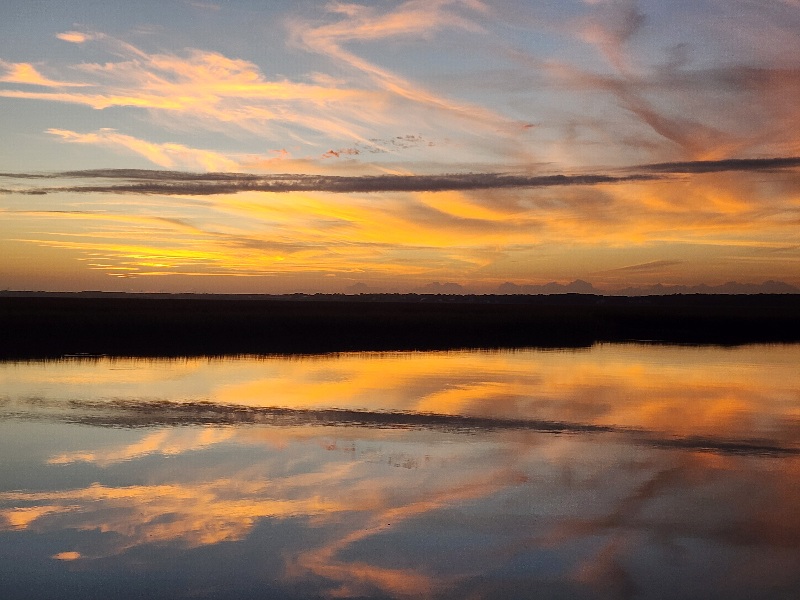When it comes to cruising via the Intracoastal Waterway (ICW), the old saying getting there is half the fun is spot on. From historic towns and peaceful anchorages to big-city bustle and vibrant nightlight, there is so much to see and do along the 1,100-mile stretch that youd be hard-pressed not to find something enjoyable for everyone.
Most sailors find entering a new anchorage or harbor after a long day on the ICW an adventure. However exciting it may be, most of us also find that it carries a considerable amount of stress, particularly if entering in fading daylight or deteriorating weather. Not only do you have to contend with navigational issues, but there are other burning questions like wheres the best place to anchor; where can I get supplies or fuel; is tonight all you can eat ribs at Hawg Heaven Restaurant; or is there a dinghy dock nearby?
The ICW channel is dredged to a controlling depth which varies with state, getting shallower as you get closer to Florida and deeper as you approach Virginia. Once you exit the channel, you are at the mercy to the local depths, and these can be rather treacherous.
Many places of the ICW are dredged sections of extremely shallow waterways. It is not uncommon to be cruising in 12 feet of water and see on the chart plotter that it is 1 foot deep next to the channel. Such a shallow depth will not be conducive to business of marinas, so they do their best to establish themselves in deeper areas and maintain these depths to remain in business.
While this may be the case, we have noticed that most of these places only have about 4 feet of water in them at low tide, making it very difficult for someone with a deep draft to anchor or tie up for the night.
We have a 5 foot draft and find ourselves relegated to the sides of the channel for anchoring at night. This is far from ideal, as we are exposed to the weather and traffic all night long.
The traffic might seem like a concern, but lets face it, the average person traveling the ICW is also a cruiser and they will also stop and anchor for the night. We have found that as the sun begins to get low on the horizon, everyone around us disappears as they enter marinas and anchorages for the afternoon and won’t emerge until the next morning.
Protection from the weather might be a concern, except that the ICW is protection in itself. The waterway is so small, narrow, and shallow that actual waves can not form! We have experienced winds in excess of 30 knots on the waterway and when it blows across the ICW, the surface remains completely flat as there is no fetch to generate waves.
Back to anchoring. The waterway is narrow and shallow, meaning that aside from designated anchorages (which are also shallow) our only option to stop for the night is to anchor on the side, just outside of the channel or finding a creek or tributaries nearby which is our preferred choice. We picked Whiteside Creek, 30 miles outside Charleston to rest for the night.
The current in Whiteside Creek is strong and pointed ouf bow into the direction where the water is flowing from. We had to turn the rudder a bit so that the boat will actually turn away from the channel. Even though we were anchored, there’s a 3 knots current flowing over our rudder making it feel like we’re still moving, a strange feeling like you are standing in between airport terminals and not using the passenger moving walkways.
Anchoring on the ICW may not seem like a dream come true, but once we’re settled in and start to enjoy our surroundings; the sounds of the ospreys, the dive bombing birds, the occasional surfacing of the dolphins, the complete lack of city noise, we feel blessed with this incredible opportunity and start looking forward to tomorrow as we slowly sail towards our next anchorage.


Very interesting! I’m getting such an education following your adventure! I enjoyed reading this- so well done! Keep on making those deposits.
Hi Sally, Thanks…for sure .. I just love nature deposit😘
Hi there! I enjoyed reading your description of the waterway. I hope you are both well. Enjoy!
Hi Dennis, awesome to hear from you. How’s basketball? Are you still dominating the games without me? You know how I like to stack the teams with you on my side. Thanks for the support. I miss you guys.
Jim- Basketball is going strong, but not the same without you! There are a lot of younger players who now play regularly which is good. He who shall not be named has made two recent appearances. Good thing you weren’t there to stack the teams! I just talked with a friend who has a good friend doing what you two are doing! I have to get the boat name and share it with you in case you meet. What a journey! Fun to follow your progress. Love the photos too! I am going to CA for two weeks with my wife on Saturday to see my mother. She is stable right now. The more time together the better. Be well and stay in touch!
Dennis
Glad you’re able to visit and enjoy some quality time with your mom in California. Safe flight and hope all is well with mom.